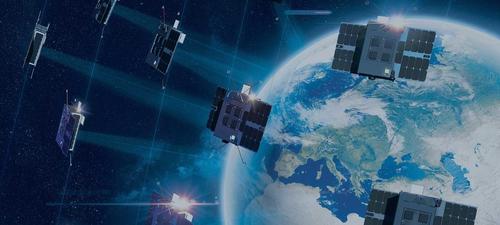Insurers Pullback On Satellite Policies Due To Space Junk Crisis
A significant challenge faced by companies operating in space is the ability to find an insurance policy written on their assets in low Earth (LEO) orbit thanks to all the space junk. Over the past several several decades, the sheer number of active LEO satellites has skyrocketed – in no small part due to Elon Musk’s SpaceX.
At present, more than 8,000 satellites are orbiting the skies above us – of which approximately 42% are inactive. There are also millions of pieces of space junk that threaten active LEO satellites.
According to Reuters, the risk for a collision has risen dramatically in the last several years, causing insurers that offer satellite coverage to pull back on policy writing or entirely discontinue products.
“This is a real issue for insurance,” said Richard Parker, co-founder of Assure Space, a unit of AmTrust Financial.
Assure Space wound down their LEO spacecraft insurance last year for fear of collision. They’ve written a few policies but exclude collision damage.
“It may start to get difficult to get that type of coverage in the near future as more insurers realize that this is a significant risk that we can’t even get our arms around,” Parker said.
The number of active satellites has jumped 68% from a year ago and more than 200% from 2016. Much of the increased activity involves SpaceX’s constellation of more than 1,700 satellites to provide people with superfast space internet in rural communities.
SpaceX Satellite Constellation
Other big-tech firms are launching LEO satellites that hover above Earth. This week, rumors via AppleInsider said the new iPhone 13 might use satellite connectivity.
Thousands of new satellites, thousands of inactive satellites, and millions of pieces of space junk are jamming up LEO where a collision is inevitable. This dilemma underlines LEO could one day become uninsurable unless the mess is cleaned up.
Space Junk
LEO satellites typically have a $500,000 to $1 million worth of coverage, far below larger satellites operating in geostationary orbit (GEO), where rates are $200 million to $300 million.
“The concentrations of debris and increasing numbers of satellites being deployed are increasing the potential for collision,” said Charles Wetton, underwriting manager for space policies at insurer Global Aerospace.
Until the LEO space mess is fixed, insurers will continue to pull or limit writing policies on satellites for fear of collisions, which means companies will likely bear more financial responsibility.
To fix the mess, the European Space Agency signed a debris-removal contract with Swiss startup ClearSpacer.
Tyler Durden
Wed, 09/01/2021 – 10:55
via ZeroHedge News https://ift.tt/3jAAfX4 Tyler Durden


